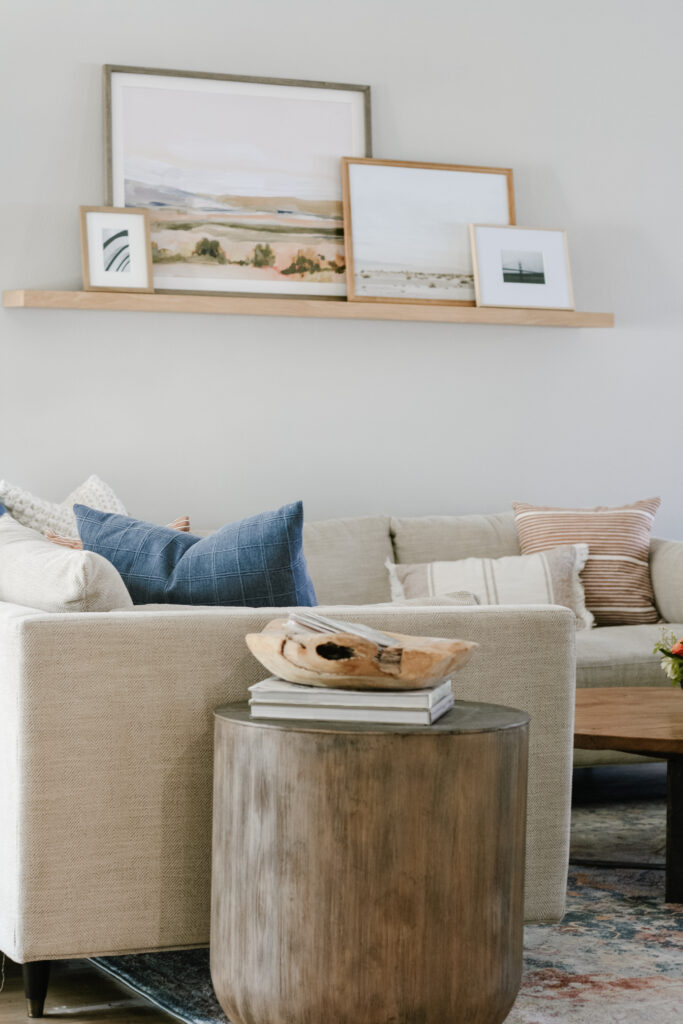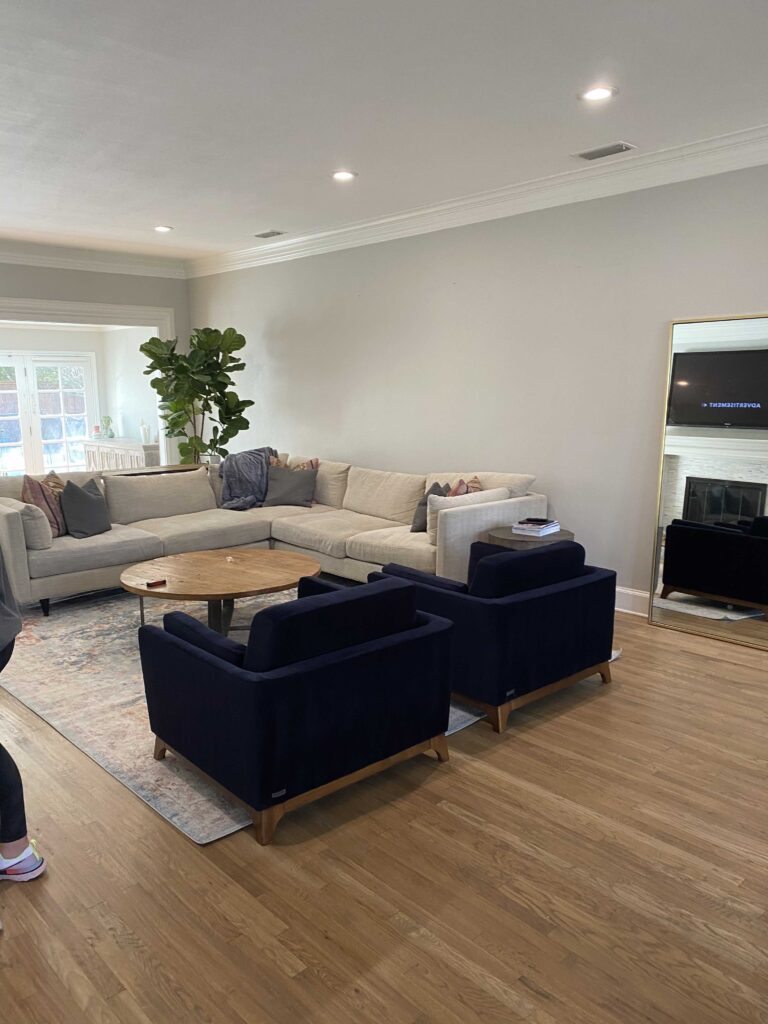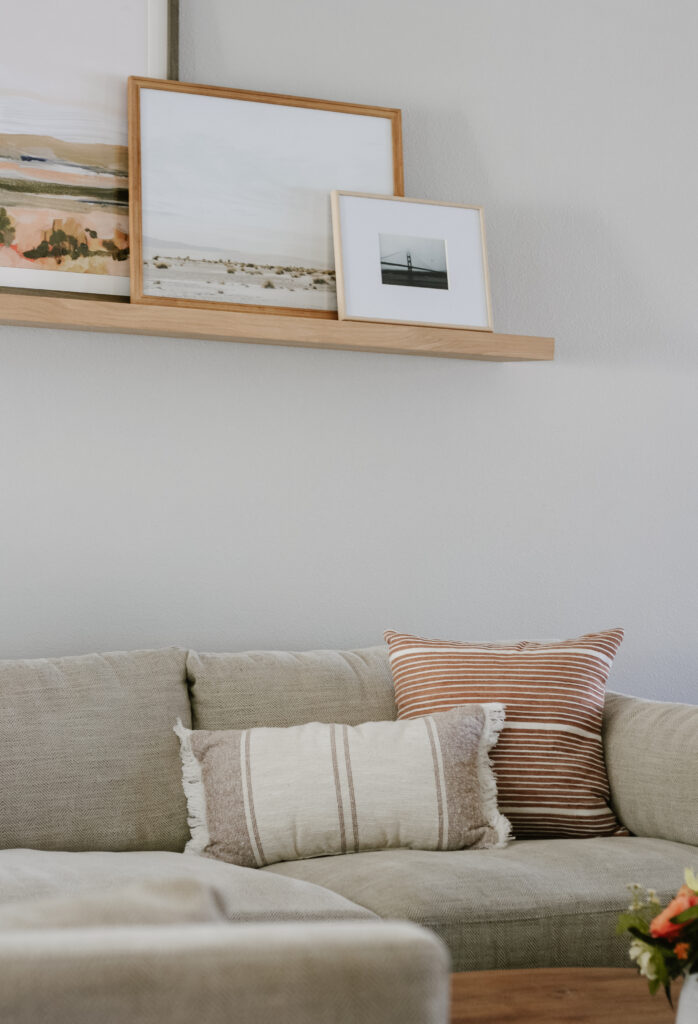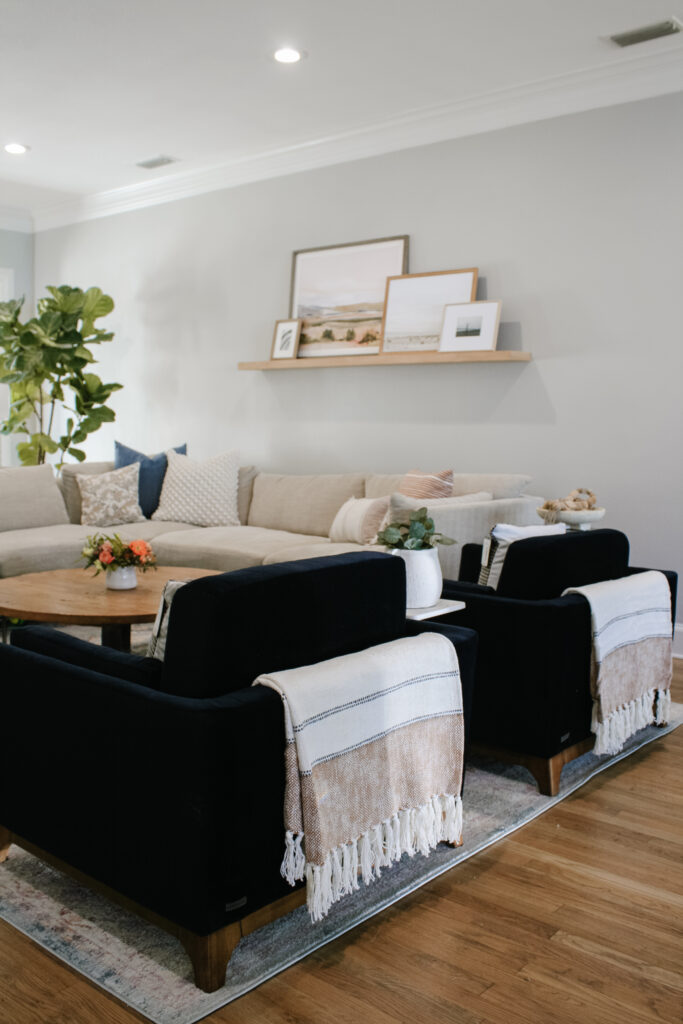HMD specializes on renovation projects that honor the home's character while adding a modern interpretation.
Explore The Blog
Home Rennovations
Do-It-Yourself
Home Styling
Favorite Things
Case Studies
How to Secure a Leaning Picture Frame
I love that we’re seeing more versatility in how art is displayed, especially when it comes to creative ideas for gallery wall decor! No longer are the days when your only option is to mix and match old frames in a random order. Now we are seeing more dynamic gallery wall designs that can be chic through a geometric grid pattern or more casual with a leaning frames on a floating shelf display.

Leaning art gallery wall
For this Dallas interior decor project, there was a large empty wall that needed to be filled. Not only was it a large wall but part of a sectional couch touched the wall. So we had to tackle the common dilemma, how to decorate a wall over a couch?
We initially talked about a large painted canvas but then pivoted to a gallery wall layout. I wanted to make sure it didn’t seem cluttered but also achieved a casual look.
See below for the “before” image of the empty wall where the gallery wall living room comes to life..

The wall space was about 6ft high over the couch and 12ft wide. We could’ve utilized two stacked shelves but in order to avoid too much busyness, we opted for one shelf with large scaled art. This is a long floating shelf (about 7ft) and the largest frame is a 28″x36″ with a custom matte.
Another question we needed to tackle was how high to hang the shelf above the couch? This client has a small child and it would be a design fail if he could reach the leaning art. The rule of thumb I typically use when hanging art is to place the center of the art about 60″ from the floor.
If you’re looking to create your own leaning frame gallery shelf, continue reading to see tips on how to secure leaning frames & how to cluster a curated selection of art!
3 ways to secure leaning picture frames
Before we get too far, we need to talk practically. How do you secure a leaning art?
- My favorite option is cutting a rubber shelf liner into a strip the length of the frame. Not only is this a cheap solution, it also doesn’t damage the frame or the surface. The key is to cut the strip the right width so you don’t have rubber liner sticking out.
- Another option would be to use Zots or mounting putty underneath the frames. This option is slightly more secure but the risk is that it damages the finish on the frame or the resting surface.
- If you plan to have a vase or a lamp on your display then you also can secure your leaning frame behind a heavier object. I love that this option brings in variety of form! But keep in mind the width of the surface as you don’t want a heavy object at risk of falling off an edge.

Tips for layering leaning frames
Leaning frames really begin to feel curated when they are layered. It creates dimension and a sophisticated feel when done right. So how do you accomplish this look without getting too cluttered?
- The goal is to overlap edges of frames without blocking the image or art. This might mean you need some of the frames to have a larger matte so that the artwork is still on display.
- The large leaning picture frame or artwork should go in the back while smaller frames should be dispersed in the front.
- You want the assortment of images to tell a story but still incorporate variety. For example, this floating shelf has two larger landscape images so it was important to add at least one image that is purely graphic (frame furthest to the left). At the same time, the graphic image I chose is still architectural. If all of the images were too similar then it would become boring. If one of the images was too random, it would look out of place. Floating shelf ideas are limitless so make it interesting by telling a story with your images!

These tips can be applied to a variety of spaces so don’t limit yourself to floating shelves! Try leaning some art already in your home and you’ll be surprised by how your old pieces can feel new.
Sincerely,
HMD
This quarterly newsletter is our avenue to share home items we’re loving, tips and tricks we utilize to elevate our designs and the latest client homes we’re curating